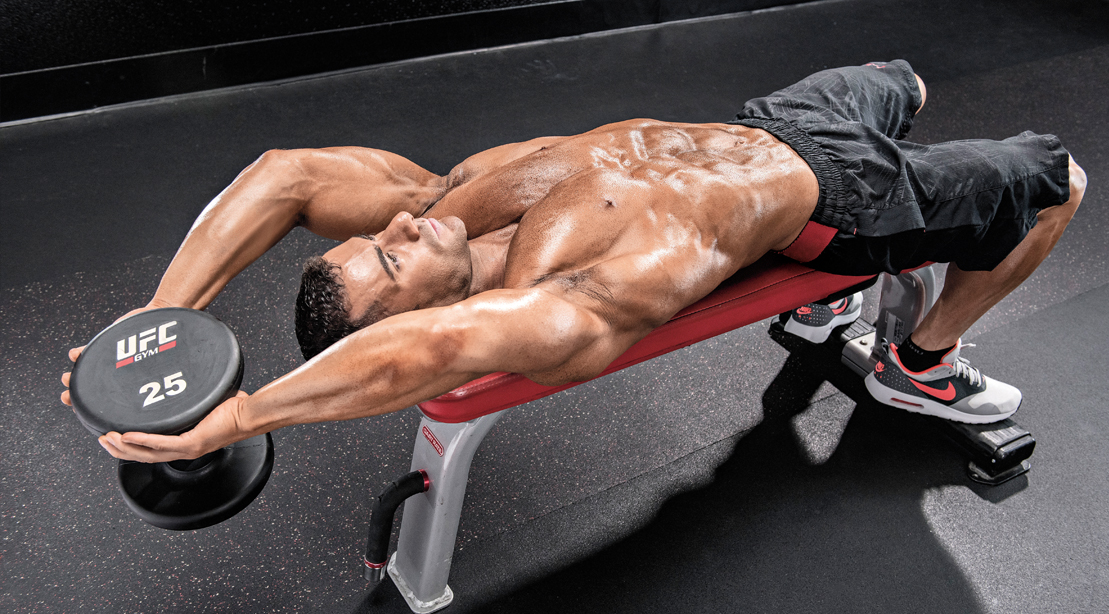28-Days-to-Lean Meal Plan
With the right plan and the right discipline, you can get seriously shredded in just 28 days.
Read article
The dumbbell pullover is one of those multipurpose exercises that can be a great addition to any chest or back workouts. However, no matter which body part you’re focusing on, there’s a trick to add a little extra spice to this exercise, and all it takes is a looped resistance band.
That is the addition of a looped resistance band.
Dumbbells are great, but there is a point in the strength curve where the dumbbell’s resistance seems easy. For example, the bottom part of a dumbbell bench press is difficult, but the lockout part is not. The resistance band opposes this strength curve to make the easier part harder, and this means more gains for you.
Here, Gareth Sapstead, CSCS, a sought-after physique training specialist, Olympian Coach, and Author of Ultimate Abs, published by Human Kinetics, presents the resistance band dumbbell pullover for your chest and back gains.

“Regular dumbbell pullovers are highly underrated. They do a great job targeting multiple muscles using angles they’re not typically trained in. For example, the function of the triceps long-head as an extensor of the shoulders, the lats (lower lats in particular) in a loaded stretch position overhead, and the lower portion of the pecs. In addition, they are also challenging your core in resisting spinal extension.
But it could be better because dumbbell pullovers have a shortfall in that you lose muscular tension created by the dumbbell as you bring it over your chest. Particularly for your lats, then you’re short-changing your gains,” explains Sapstead.
To make them work even better, you have two options, according to Sapstead.
Setting up is easy, explains Sapstead.
Loop a band around a rack, dumbbell rack, or something that won’t move, then the other side around your dumbbell. You’ll want to start with a light resistance band to get a feel for it, but make sure you use the dumbbell weight you usually use.
The following key is to rest the dumbbell on the bench set close enough to the band’s anchor point. If the dumbbell is too light for the band, you might struggle and need to wrestle the dumbbell into position all at once. If the dumbbell weight is enough for the band not to pull it, then you can rest it on the bench and lie down before picking it up.
The best way to hold the dumbbell, according to Sapstead, is against the inside of the dumbbell weight and with your hands set like a diamond (as if performing some close-grip diamond pushups). Keep your anterior core and glutes engaged throughout and limit too much back extension while allowing your elbows to travel back and the dumbbell to go overhead.
Keep your elbows at the same fixed angle throughout the range of motion, enabling the dumbbell to travel as far as your mobility allows. You should feel a good stretch in your lats in the overhead position.
As you return the dumbbell to its start-finish position over your chest, focus on your lats doing the work, which is helped by the additional loading of the resistance band at the top.
Sets & Reps
Sapstead suggests two to four sets of 10-20 reps work well. They’re incredibly safe, and to build maximum muscle, you should be getting within 0-2 reps of failure on every set.